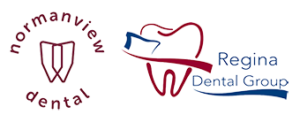Tooth Extractions: Things to Know
Tooth extraction is the removal of a tooth from the bone and socket. This is usually required when there is severe tooth decay, oral infections, or when the teeth are overcrowded. Occasionally, tooth extraction may be used when patients get braces in order for the teeth to shift to their proper place in the mouth.
Patients who undergo chemotherapy or have organ transplants commonly have tooth extractions in order to keep their mouth healthy during the time of treatments.
Your dentist or oral surgeon can perform this procedure with the use of local or general anesthesia. Removing a tooth is a relatively simple process and is an outpatient procedure. However, if you have a tooth that is broken or impacted, the process may be more involved.
One of the most common tooth extractions is the removal of wisdom teeth (third molars). These teeth erupt during the late teens or early-mid 20s, but often get stuck in the jaw and impacted before they even come in. When this happens, the gums get irritated and can cause severe pain.
Preparing for Tooth Extraction
Before the procedure, X-rays are taken of your tooth. This determines the extent of the surgery. Your dentist will evaluate your dental history and inquire about any medications, vitamins, supplements you take regularly. If you have other medical conditions, be sure to tell your dentist. Certain treatments increase your risk for jaw infection and having open wounds in the mouth can put you at risk for bone infections.
Leading up to the procedure, your dentist may prescribe antibiotics to reduce the risk of infection. This is especially common if you have pre-existing conditions that affect your immune system or if the surgery is expected to be unusually long.
On the day of your extraction, be sure to follow your dentist’s instructions.
- Wear loose fitting clothes that do not restrict blood flow and make receiving anesthesia easy
- Don’t smoke the day of your extraction
- If you have a cold or sinus infection, call your dentist ahead of time
- If you are have anesthesia, be sure to arrange transportation for after the procedure
The Procedure
There are two different types of tooth extractions:
- Simple Extraction: This is performed on a tooth that can be seen in the mouth. This type of procedure is typically performed in-office by your dentist. The tooth is loosened with a tool called an elevator. Forceps are used to remove the tooth.
- Surgical Extraction: This is a more complicated procedure. This is done if the tooth is broken at the gumline or has not come in yet. Surgical extractions are generally performed by oral surgeons, but can be done by a general dentist, too. A small cut is made in the gum and the tooth is extracted.
During either type of extraction, there is little-to-no pain, but you may feel some pressure. If you experience any pressure or pain, be sure to tell your dentist.
Risks of Tooth Extractions
There is very little risk for tooth extractions. Because they are done to increase the health of your mouth, the benefits greatly outweigh the risks.
After the procedure, blood clots form in the hole where the tooth was pulled. If the blood clot does not form or comes loose and the socket is exposed, this causes dry socket. Your dentist may put a dressing over the area for a few days while a new clot forms.
Risks that can occur include:
- Fever and chills
- Nausea
- Chest pain
- Swelling or redness at the extraction site.
If you experience any of these symptoms, be sure to call your dentist or oral surgeon right away.
If you would like to learn more, please do not hesitate to give us a call or contact us to book an appointment.
